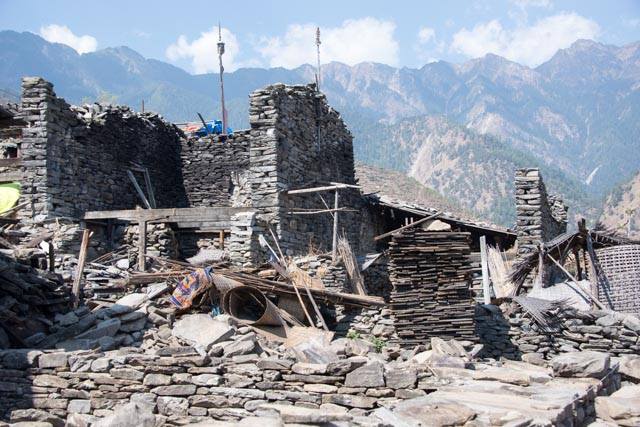Our team is pleased to announce the second publication from the Nepal Critical Transitions Project in the International Journal of Disaster Risk Reduction, entitled “Anatomy of disaster recoveries: Tangible and intangible short-term recovery dynamics following the 2015 Nepal earthquakes.” The highlights and abstract follow. Thank you to all of our wonderful collaborators (please see Acknowledgments in the article for a full list).

Highlights:
Complementary methods show tangible and intangible disaster recovery dynamics.
Post-disaster inequality evident through structural violence and spatial dynamics.
Poorest experienced hazard exposure, livelihood disruption, and displacement.
Place attachment, uncertainty, and mental well-being interrelate for most marginal.
Recovery dynamics may illustrate nascent household and settlement transformations.
Abstract:
The April/May 2015 Nepal earthquakes and aftershocks had catastrophic impacts on rural households living in biophysical extremes. Recoveries from natural hazards that become disasters have tangible and intangible short- and long-term dynamics, which require linked quantitative and qualitative methods to understand. With these premises in mind, we randomly selected 400 households in two accessible and two inaccessible settlements across two of the highest impacted districts to assess variation in household and settlement recoveries through tangible impacts to infrastructure and livelihood and intangible impacts to place attachment and mental well-being. We conducted household surveys, in-depth interviews, and focus groups over two ten-week intervals at 9 months and 1.5 years after the earthquakes and returned at 2.5 years to share and contextualize results. Previously, we used non-metric multidimensional scaling ordination to illustrate associations among recovery indicators, demographics, and adaptive capacity domains composed of multiple variables. Results indicated that socio-economic status, hazard exposure, livelihood, and displacement influenced recovery outcomes the most. Here, we triangulate and broaden those findings with 797 surveys, 40 interviews, eight focus groups, and eight research return workshops to illustrate the tangible and intangible dynamics of short-term recoveries through three interconnected and multi-faceted thematic sections: 1) inequality; 2) hazards, livelihood, and displacement; and 3) place, uncertainty, and mental well-being. Our contributions include: 1) providing a linked quantitative and qualitative dataset with a random sample collected at two short-term post-disaster time intervals; 2) illustrating how inequalities shape tangible and intangible recovery dynamics; and 3) documenting linkages between recovery and nascent transformations.
This article is fully open access. See link below.
https://www.sciencedirect.com/science/article/pii/S2212420920313819

Leave a Reply